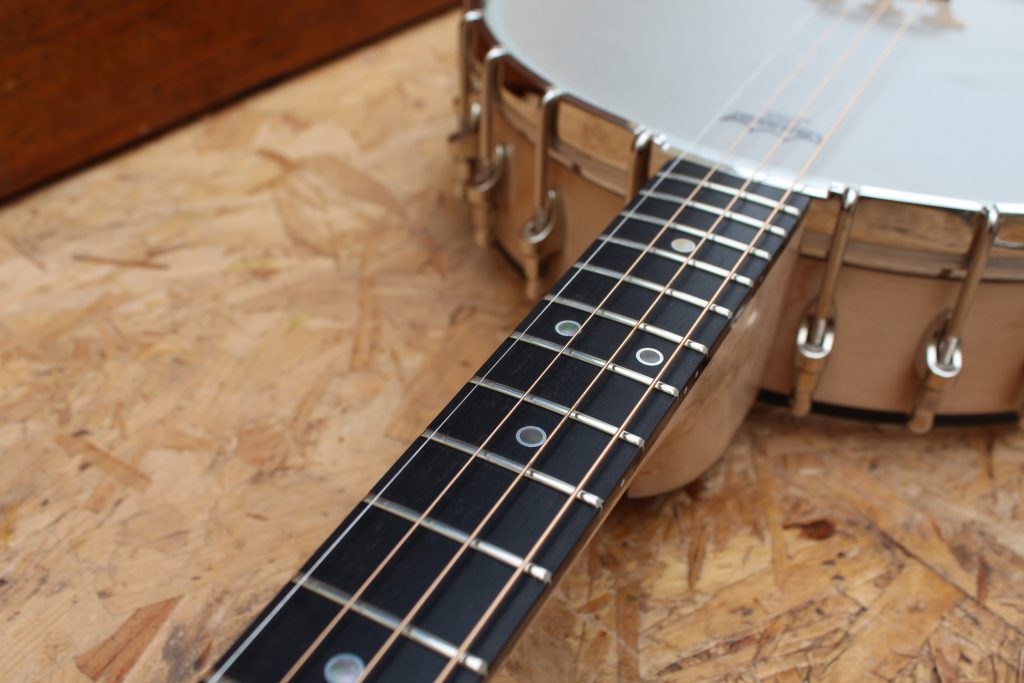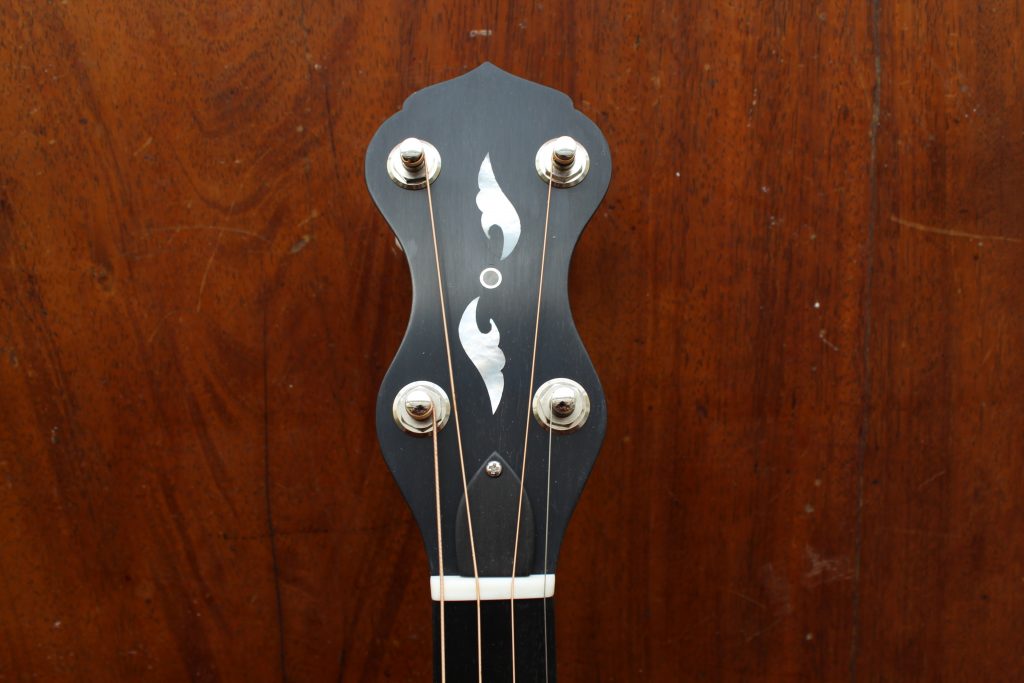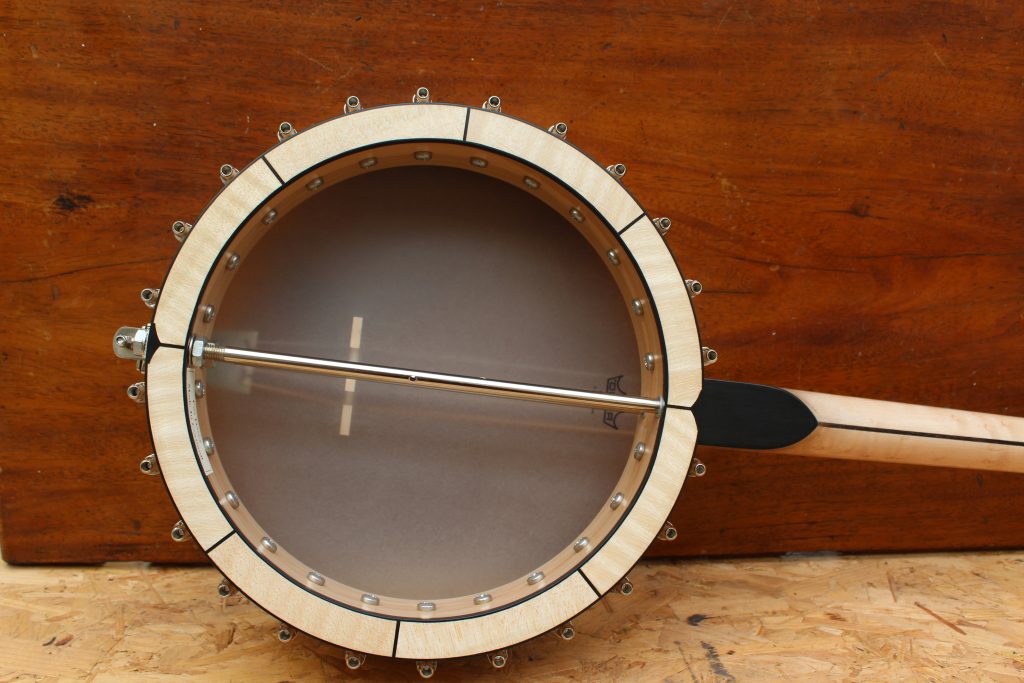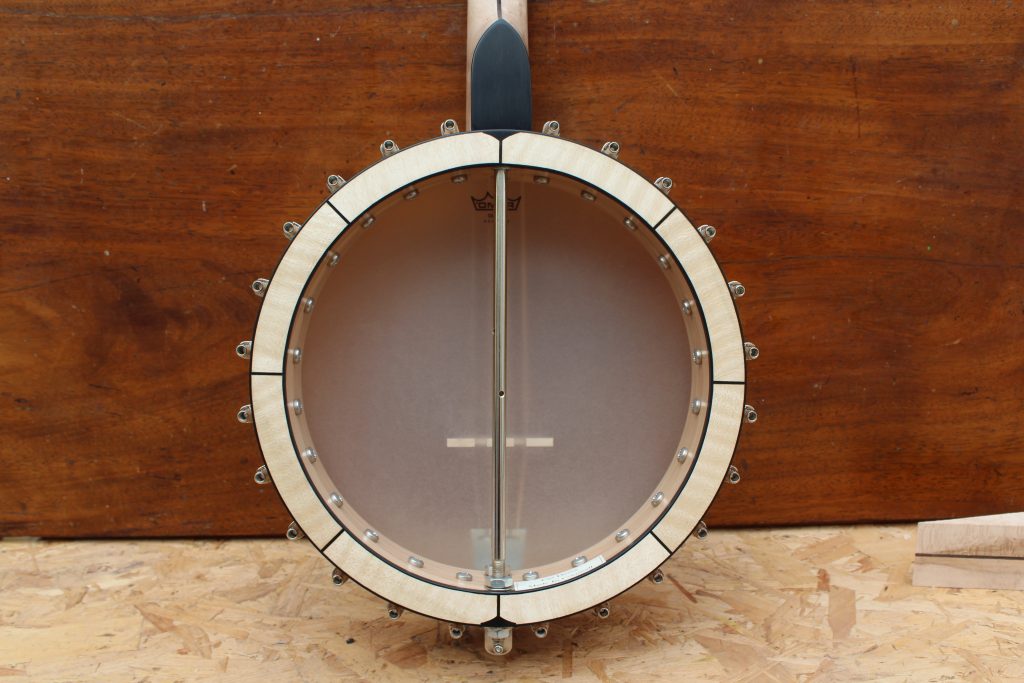

I really like an excuse to use these dot markers. Tahitian black pearl set into sterling silver, on this ebony fingerboard, really stand out. Little touches make all the difference to an instrument when it all comes together.

This banjo was built with a three part maple/wenge/maple neck. It gives it a lot of stability but also some really nice clean cut lines. This birdseye maple is, and was, notoriously difficult to carve. But the results in the end were well worth it.






